The Pro Tour Phyrexia was the first official, large-scale in-person Magic event since the pandemic, with full coverage taking place over three days, featuring game after game, Draft picks, competitor interviews, and more of what we haven't had with such quality for a long time.
However, not everything is rosy: Wizards also made some considerable gaffes during streaming, such as failures in lighting, camera positioning and, mainly, starting a new preview season while the finals were taking place.
In this article, I present the pros and cons of the event, under a viewer's perspective.
A better marketing of one of the most important Magic events is missing
When I entered the Magic universe, in 2008, the game was still a small niche market that moved a select group of people who liked card games, RPGs and other geeky stuff. Today, Magic has grown to be Hasbro's billion dollar brand.
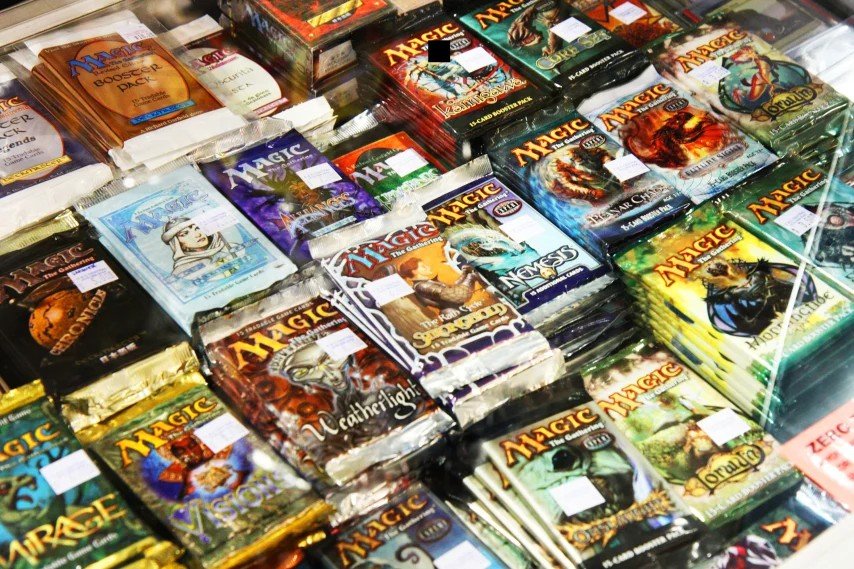
Back in 2008, in Booster packs, there was an advertising piece on the back of the tokens: some promoted the next release, others talked about Friday Night Magic, or products from the Ultra Pro line, and there were those with "Play the Game, See the World" - a phrase that became widely known as a feature of the Pro Tour, Magic: The Gathering's biggest professional event, where you could qualify via an intuitive tournament system and which you could also give you the opportunity to compete in the World Championship.
Back in the present, it is undeniable that Magic today is more consumed by a casual audience than by those who aim to compete, and everything around the game seems to have moved around this: we no longer have SCG Opens and other events, the Regional Championships are what's left of the big party that used to be the Grand Prix/Magic Fests, and even most of the content produced about Magic today has a less competitive focus.
But that doesn't mean that competitive Magic doesn't exist: there are hundreds of thousands of players willing to invest time, money and energy in specializing in certain formats and participating in tournaments in exchange for prizes and / or seats to major events. The core of the game, for decades, was the competition, and the scale of releases that worked for 25 years was intended to keep the competitive formats fresh and bring new features to motivate players and retailers to open boosters - And today, we still have a very dedicated to tournaments audience.
So, why do so few people who aren't fully engaged with Magic care about the Pro Tour?. The game's largest professional event should be celebrated and widely publicized across tabletop and digital networks and platforms. After all, if we can have Secret Lair inserts in boosters and bundle advertisements in Magic Arena, what does it cost to have an announcement on the home page that a great event that you can even get to participate in by playing the tournaments which take place on the very Magic Arena platform you're playing?!.
Benton Madsen, who reached the finals against Reid Duke on his first Pro Tour, qualified for the event via Magic Arena, so why not publicize this moment that many players dream of achieving, while hundreds of others might not even know that such a possibility exists?! Why not give these people something they might want to dedicate themselves to?
Even though casual is the engine that drives the game today, watching a high-level competition with plays as elegant as those we witnessed on this Pro Tour is beautiful, and would give so much to those who play with their friends at a Commander table on the weekends, and for the person who opens Magic Arena on their cell phone, something to be interested, entertained and, perhaps, a reason to further dedicate themselves to the game even when the company itself has already made it clear people should not see Magic as a career.
Advertising the Pro Tour is valuing the game itself, the players, the community and the very products the company wants to sell, and as long as we treat it as 'just a tournament', as it has been since the pandemic times, Magic will never have the recognition that it deserves as a game, even though it is now a billionaire brand.
Thanks to Magic Arena, Draft became fun to watch
One of the biggest benefits that Magic Arena has brought to the game is that people have become more accustomed to participating in events like Draft or Sealed to improve their picks and, where before these formats were practically forgotten or made mandatory to make the people play, it has now become part of the digital platform's culture, and almost a must for those who want to build a collection without spending tons of money in the process.
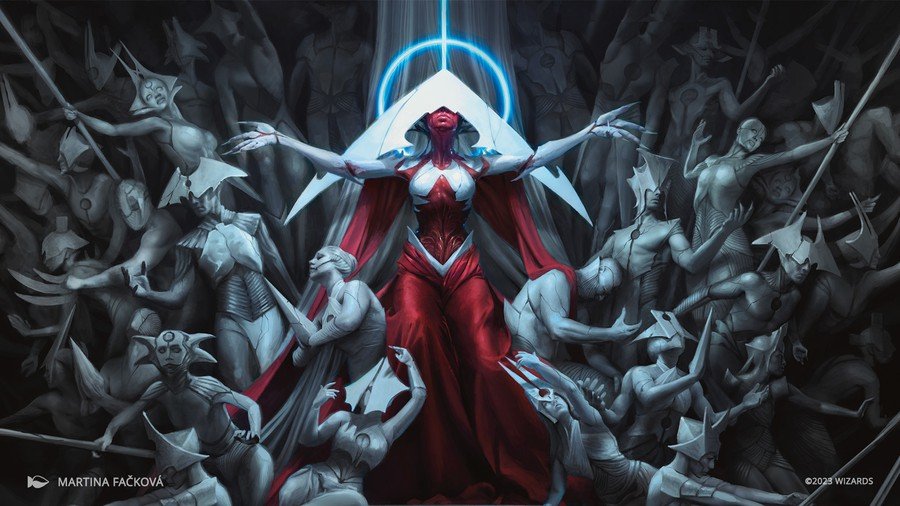
The result is that people now interact more with draft decisions in the chat, and Limited matches have become interesting to watch. Spectators began to be entertained when a player opened a bomb, or with how the matchups developed.
Yes, Constructed is still the most fascinating part of Pro Tour and also the one that most impacts the market and the game, but if there was a benefit to Magic Arena's existence during the pandemic, it's that it greatly strengthened the relationship between the consumer and Limited formats.
Spacing, Adaptation and Angles
We can say that watching the Pro Tour has always had some pros and cons during its broadcast since the days when the matches were broadcast on ESPN (yes, that happened, there are videos on YouTube), and one of the points that has not changed is the difficulty players have to identify the cards in it, and unfortunately, this is natural in any TCG because a high definition image is not enough for the spectator to read the cards, and this problem is addressed through the casters and efficient use of on-screen resources, two elements which Wizards masterfully executed throughout this event.
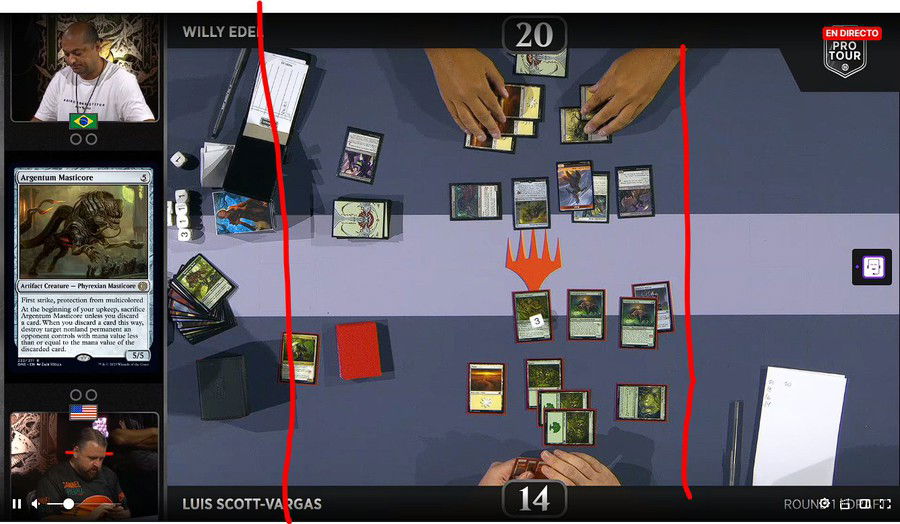
Another criticism received by viewers was the lack of use of screen space, which left a lot of unnecessary information (deckboxes, dices and reserve tokens, etc.) exposed. This issue was addressed on the second day of the tournament, and in the Top 8, the on-screen information during matches was remarkably well-aligned with what you'd expect from coverage of a professional Magic event.
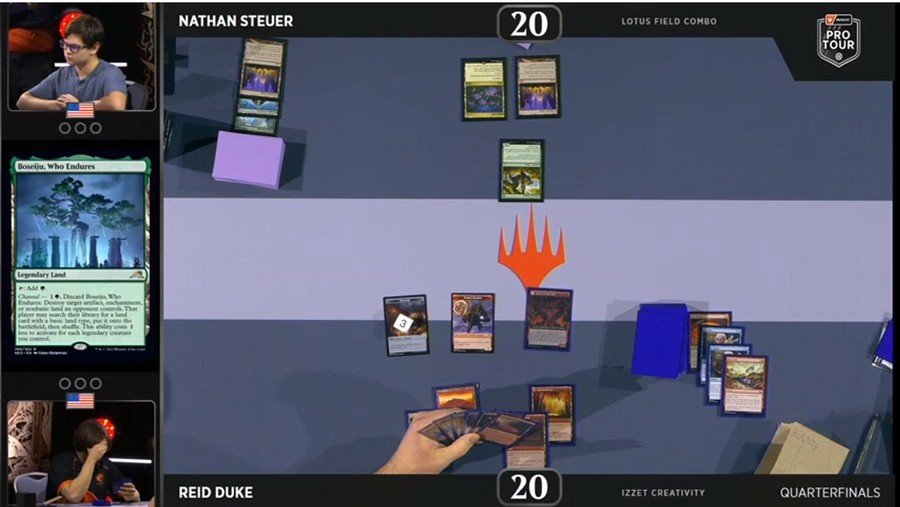
And what about changing the angle of the game from horizontal (where the spectator sees the cards sideways, as if they were next to the table) to a frontal view, from above? There are some cons which need to be tweaked and become a bit unacceptable for a billion-dollar company, such as the excessive shadow on the judges' heads at the side of the tables, but overall, it was a very welcome change that not only revitalizes the way we watch tabletop Magic, but it also makes the streaming interface much more intuitive for the Magic Arena player.
There is, however, an issue that will become uncomfortable for viewers in the long run, particularly if Modern becomes a Pro Tour format again.
Too many variants make the game harder to understand
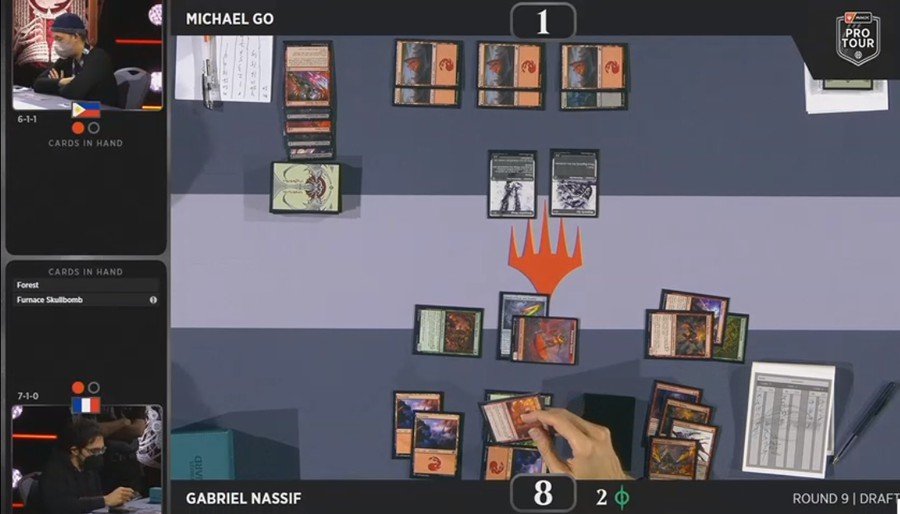
Can you, in the image above, identify which cards are in the Phyrexian variant? Do you believe a recurring draft player could identify them?
Magic has become a game with a certain excess of aesthetics and variants in recent years, and we have cards that are too difficult to identify - mainly those from the Secret Lair series - but are tournament-legal, and when they are put on the table, the impact they carry on the symmetry during coverage is gigantic.
Now, imagine in a format with wider promo card availability, such as Modern, where an Izzet Murktide player can have four copies of borderless Ragavan, Nimble Pilferer, four copies of Serum Visions with its Secret Lair variants, Steam Vents from Unfinity, full frame basics from Innistrad: Crimson Vow and whatever else they want from alternate and promotional versions of their favorite deck, and they're in the Top 8 feature match against a Hammer Time player who has the standard version of all cards - the result would be a dissonance between the identity of the game and the image the viewer sees in the broadcast.
So, as much as they add to Magic's collectible factor, variants can easily become a future issue who distances the viewer from the game by creating an asymmetry between what happens on the table and what the screen presents. This is nothing new, however, Masterpieces and Expeditions already existed before this new era of the game, and players ran them with some frequency, so it is possible that we will have to get used to these things happening more often now.
Seeing good players on tabletop games makes Magic look like a sport
Nothing is more interesting in coverage than seeing well-executed games, and no one better than some of the best names that have ever gone through Magic to provide these moments to the viewer, and tabletop games end up passing on a refinement that the tournament broadcasts on Magic Arena lacked.
Although there were other issues, the main reason was the lack of a platform really created for streaming matches online, such as through a spectator mode. Having the entire coverage done via screen-sharing made it feel amateurish and awkward, which is inexcusable for, again, a billion-dollar company.
With that hindrance out of the way, it's clear that Magic feels a lot more like a sport when it doesn't try to be one than when it tries too hard to compete in the E-Sports universe where Hearthstone, Legends of Runeterra and even Yu-Gi-Oh! manage to establish a more friendly and professional atmosphere for their events. And, perhaps, Wizards could consider the gains it would make from promoting its flagship brand not just as a collectible card game, but as an in-person sport that rewards good decisions among its competitors.
Another highlight of the event is how we have watched the games, one after the other, without breaks. This allowed us to make better use of our time on the stream and ensured many exciting moments, like when Nassif opened a Sword of Forge and Frontier in the draft, or when we watched Shota Yasooka pilot Rakdos Midrange with a huge mastery, or when Benton Madsen showed why Boseiju, Who Endures is a multi-format staple when using it on the best timing as possible, and the many times Reid Duke got out of situations which would be considered by many players to be impossible to find a play to turn the game.
When new products tramples a Pro Tour finals, something is very wrong
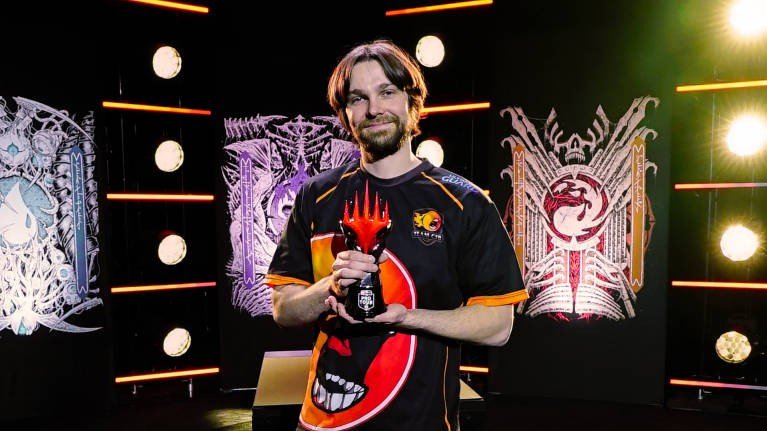
The last point worth mentioning about the Pro Tour Phyrexia coverage is organization, and what was going very well during the first two days of the event failed when they announced that the first previews of March of the Machine* would take place on the same day and time as the final round of the event.
Consequences included the loss of prestige that a Pro Tour final deserved, the need for a large portion of the community to keep an eye on the match and the Twitter timeline simultaneously, the lack of a live stream for the previews because they were streaming the game, and such a cacophony of new information in such a short time overshadowed, for many, that Reid Duke won his first Pro Tour in 13 years. Even the trophy ceremony for the champion felt like the end of a party where everyone was just too tired to care.

Magic has gone through numerous difficulties in the pandemic, and for many who have been following the game for years, this Pro Tour was their first experience of 'normalcy' in years. Ruining this momentum by trampling the main event with previews of the new set a week after the previous set was released is a fatal mistake, and only shows how the commercial sector of the company seems to have the loudest voice and fails to communicate with any other structures of the game.
And hey, ending a big Magic weekend with previews isn't a bad idea. Despite the inappropriate timing of not even waiting 15 days to enjoy the latest product, what another brilliant opportunity to get the community more excited and wrap up this great festivity that is the Pro Tour, if not with a preview of what's to come? Yes, it's still playing spoiler and product burnout, but if this is the new normal for Magic: The Gathering, why not at least do it the best and smartest way as possible?
Unfortunately, for the spectator, the Pro Tour ended with a bitter feeling that Wizards neglected the players, the events and the game itself for the sake of products, and all the beauty of watching three days of great games with great players was overshadowed by the resounding echo of the new Omnath, Locus of All's reveal.
Conclusion
That's all for today.
Pro Tour Phyrexia was the first of many official events which will feature tabletop games as their main attraction. In technical terms, Wizards learned from some mistakes and, despite still lacking in certain details, it brought a rewarding experience to the viewer.
However, the company's management decisions are still very questionable, and what should have been a grand celebration of Magic ended with the same reminder that the game is nothing more than a product to be sold, and great competitions and their participants are still overshadowed by this harsh reality.
Thanks for reading!

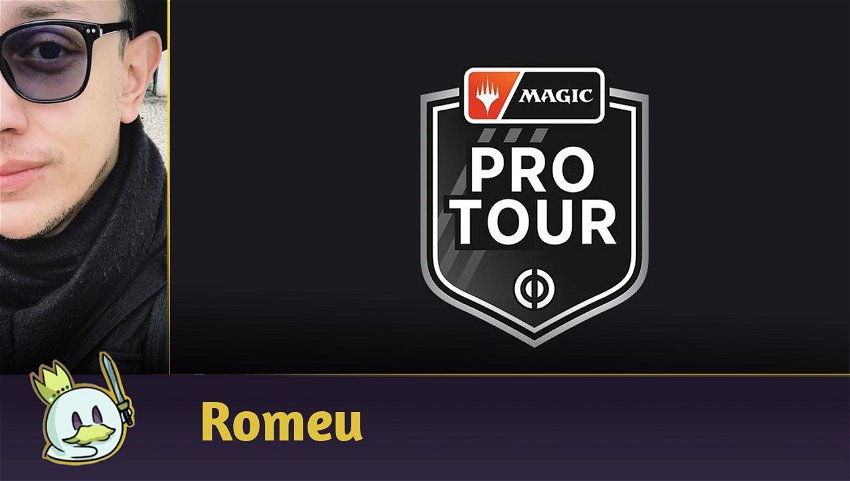






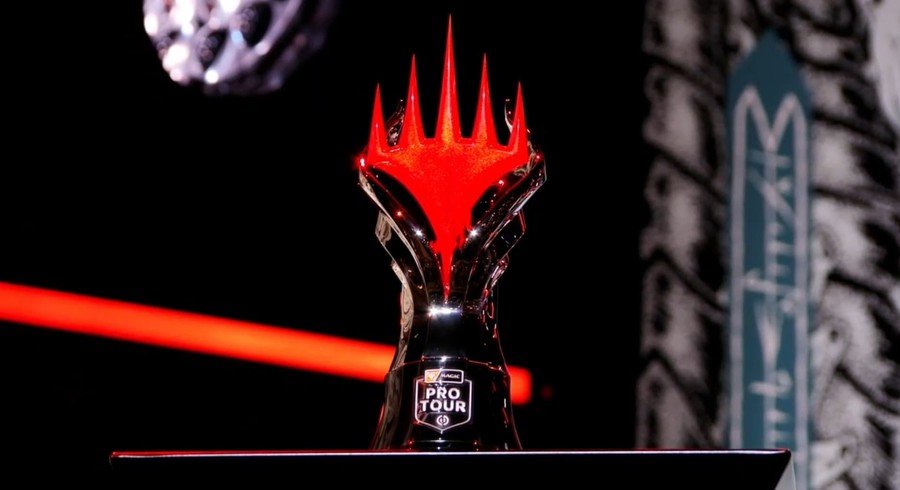
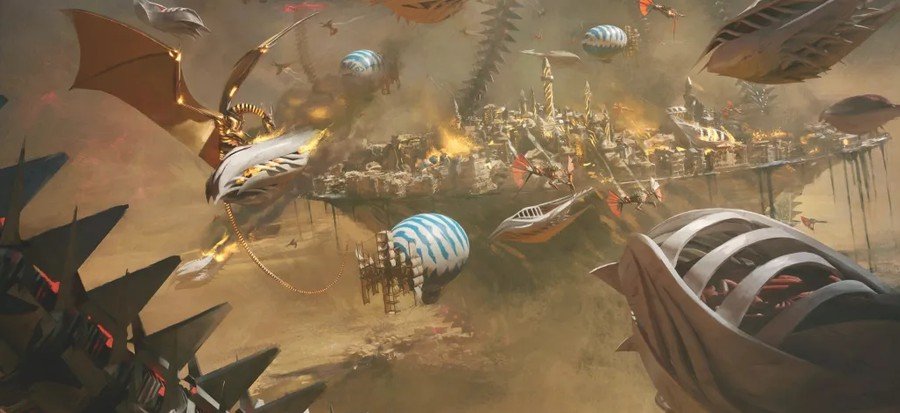



— Comments 0
, Reactions 1
Be the first to comment